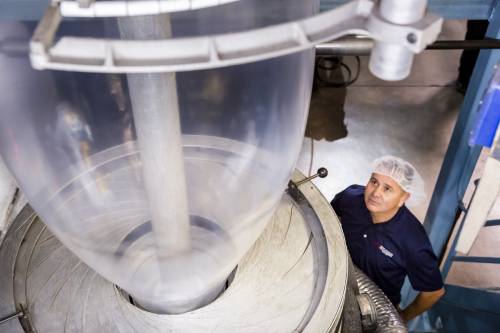MONOLAYER FILM

Monolayer film is produced with a single film layer typically comprised of LDPE, LLDPE, high density or polypropylene. A metal crimp, twist tie or reclosable feature such as a zipper or tape seals the opening.
Monolayer film is an economical choice when single-layer film properties are sufficient to protect the product from oxygen transfer (OTR), water vapor transfer (WVTR) or other gaseous or greasy substances.
MULTILAYER FILM (Co-Extrusion & Lamination)
Multilayer film is desirable because it joins the best properties of multiple resins into a common structure that performs better than its individual parts. Multilayer film can be co-extruded or laminated.
“Co-extrusion” is when separate extruders are used to produce layers of different polymers. The layers join together in the liquid state just before the extrusion die. The combined layers then pass through the die to be cast or blown into one multilayer film.
“Lamination” adheres multiple film layers together with a bonding agent. Adhesive is applied to the less absorbent layer. A second layer is then pressed against the first to produce a multilayer film. The process is repeated for additional layers.